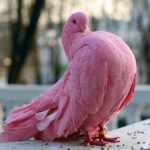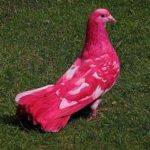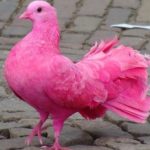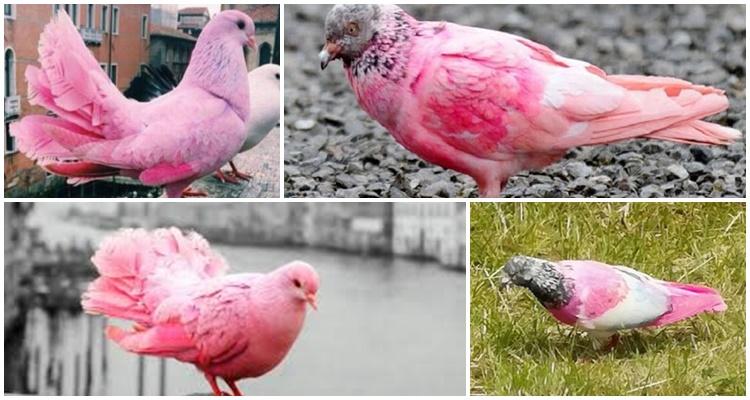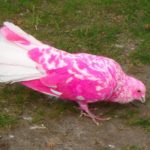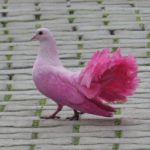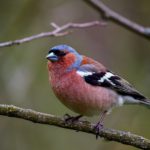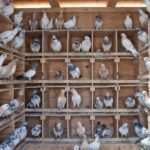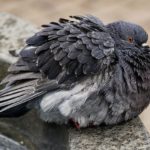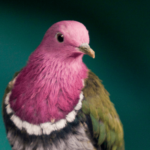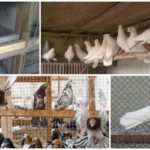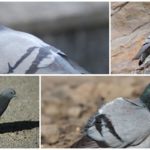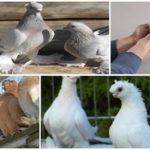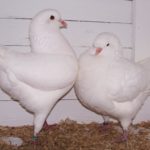Pink pigeons come in different varieties. Birds with unnaturally colored feathers are often seen at special events. This shade is obtained using natural dyes. At the same time, pink birds exist in nature. However, they have a more natural feather color. This type of pink pigeon is distinguished by its muted color. They have pinkish feathers on their back, head, neck, chest, and back.
Appearance of a pink dove
These pigeons have an unusual appearance. There are pink-headed pied and pink-capped birds. Their habitat is small. The birds live in the tropical rainforests of Mauritius.
Pink pigeons, which are found naturally, have significant differences from artificially produced coral-colored birds. If you do not take into account the tone of the feathers, the birds in appearance strongly resemble their gray relatives. At the same time, they are characterized by certain properties:
- Individuals are small in size. The length of the body is 36-38 centimeters. Weight, on average, reaches 320-340 grams.
- The neck is of medium length. It is somewhat shorter compared to ordinary pigeons.
- The head is small in size and has a regular round shape.
- There is a ring of skin without feathers around the eyes. It has a red tint. The irises are characterized by a dark yellow color.
- The beak is considered quite powerful and longer compared to rock pigeons. It widens slightly towards the head. This part is characterized by a gradient shade - from a reddish place in the area of \u200b\u200bthe connection with the head to the pink tip.
- The paws are reddish in color and include 4 toes. In this case, there are no feathers on the paws. The claws are considered long and powerful.
- The tail is directed downward and resembles a wide fan in shape.
- The feathers on the chest of pink birds are considered less rigid compared to ordinary rock pigeons. They seem light and fluffy. In appearance, the feathers resemble fur.
When flying, pink pigeons often make a soft sound - “huuuuu”. In some situations, males are capable of emitting a war cry, which sounds like “ku-ku-uuu”.
Habitat
These birds are considered endemic representatives of the fauna. They live in a very limited area. In nature, pink pigeons are found in forests located in the southern part of the island of Mauritius.They can also be seen in the east of the coral island of Egret, which is located in the Indian Ocean.
At the end of the 19th century, the birds began to be considered rare. At that time, there were literally several hundred birds left on the planet. By the end of the 20th century, the population had decreased to 10 individuals. This prompted scientists to take urgent measures aimed at saving the population. Today, approximately 400 pink pigeons are found in nature. At the same time, about 200 more birds live in captivity. The birds were even included in the International Red Book as an endangered species.
What does it eat?
Birds feed on the plants that are found in their habitats. Depending on the season, pigeons eat fruits, seeds, and buds. Birds often peck leaves, flowers, and young shoots. When alien crops are introduced into the natural conditions of the islands, birds lose their usual food. Therefore, places are created for them where they can consume food given by humans. At the same time, the birds eat cereals or corn. Such assistance is mainly required by individuals who are engaged in raising young offspring.
Birds raised in captivity are adapted to different types of food. They use formulations based on greens, cereals, and grains. Fruits and carrots are also often present in their diet.
Bird lifestyle
The lifespan of pink pigeons is approximately 20 years. Moreover, it is greater in males. Birds fly beautifully, but they do not like to move long distances. In flight, birds can be noticed by their high speed and excellent maneuverability.
Under natural conditions, wild pigeons live in small flocks of up to 25 individuals. They gather to live together and search for food. Birds are monogamous in matters of reproduction. They constantly defend a specific territory and do not even allow their own relatives into it.
Population and conservation status
Pink pigeons have long been on the verge of extinction. This forced the Durrell Conservation Trust to take action to preserve the population of these birds. This happened back in 1977. At the Darrell Zoo on the islands of Jersey and Mauritius, special conditions were created aimed at raising such pigeons in captivity.
As a result of these activities, the birds were released into the wild in 2001. At the same time, 350 individuals of this species were released into the wild.
The exact reasons for the extinction of birds are still unknown. Ornithologists name a number of possible factors that come from people:
- deforestation of tropical forests - they are considered the main habitat for birds;
- environmental pollution - pigeons are negatively affected by chemicals used in agriculture;
- importation of predatory animals onto the island - they lead to the destruction of birds.
The main threat to the existence of the pink pigeon is considered to be the destruction of nests and the eating of chicks by predators. Mongooses, rats, and Japanese cynomolgus macaques lead to the destruction of birds. Significant declines in bird populations are also associated with severe storms.
Scientists are confident that further preservation of the population of these birds is impossible without human help. That is why it is so important to carry out various measures to protect pigeons from predatory animals and breed them in captivity.
Captivity
It is difficult to tame such pigeons.To this day, these activities have not brought noticeable results. Individuals are considered very capricious. They are not able to adapt to various climatic factors. In addition, the birds are distinguished by their freedom-loving character and have difficulty navigating in open areas.
Efforts to breed birds have not led to the desired results. If people opened the enclosures, the birds simply flew away without returning. As a result, the birds were lost in space, not knowing where to fly. Sometimes the birds tried to join the flocks of rock pigeons. But this led to their quick death. This was due to difficulties in adapting to the food consumed by their relatives.
In the second half of the 19th century, American and German scientists managed to adapt the birds and place them in nurseries. There they were provided with suitable living conditions. At the same time, the birds refused to mate and lay eggs. Only in the second half of the 20th century were birds able to be resettled in zoos, which provided conditions suitable for breeding.
Pink pigeons are considered a rare bird species that is on the verge of extinction. Therefore, modern scientists put a lot of effort into preserving the bird population and breeding them in captivity.

